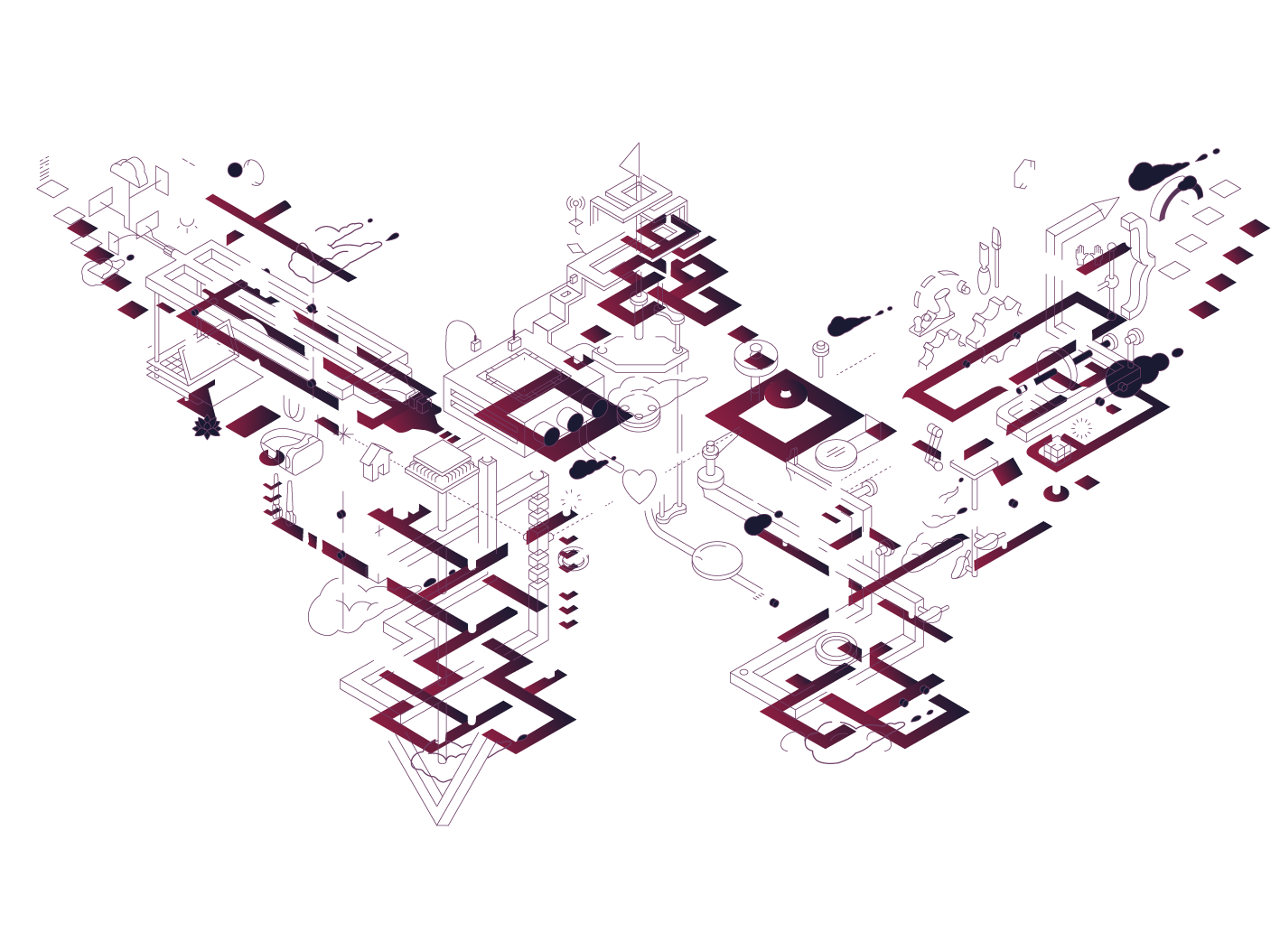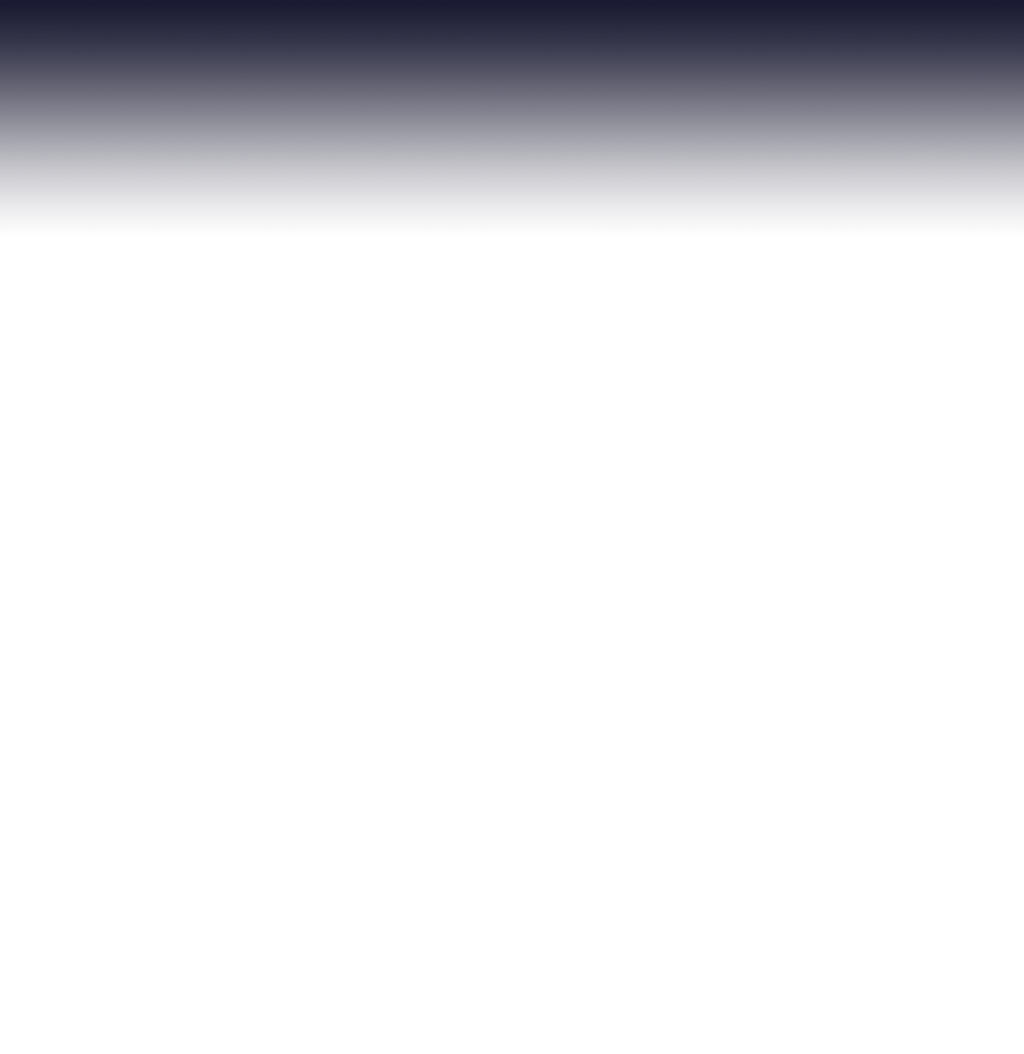Detailed, hands-on workshops from some of the best practitioners in our industry.
How to Make Sense of Any Mess: Information Architecture for Everybody
with Abby Covert
Any large scale design sees entropy set in, as it becomes more of a mess with every new feature and data source. Confusion abounds and frustration emerges, as users do their best to navigate and complete their tasks, but serious house cleaning is in order.
Get your messy, complex information architecture challenges under control. Put confidence behind your recommendations with a detailed understanding of the meaning and connections buried in your design.
Reduce your design’s confusion and frustration by implementing controlled vocabularies and taxonomies. Choreograph your organization’s information architecture across multiple audiences, contexts, devices, and channels.
Nobody brings deeper knowledge and experience than Abby when tackling gnarly information architecture problems.
What you’ll learn
Attendees will learn how to…
- Craft an information architecture across multiple platforms
- Establish a consistent vocabulary across all products
- Classify information with proven organizational models
- Effectively debate language and structure requirements with stakeholders
- Confidently facilitate working IA sessions with collaborative techniques
- Organize mounds of complex information to achieve a delightful user experience
Who it’s for
Designers and Product Managers who are dealing with large complex information challenges
What to bring
A mobile device or laptop to access the web
Monday 12 Feb
Michael Fowler Centre
9:00am—5:00pm
$695 with conference badge, $795 without
This workshop has now sold out. If you wish to be waitlisted, please email Natasha Lampard
▲ Top
Design Thinking or how to solve complex business problems and make better products
with Andy Budd
All too often businesses are seduced into thinking that everybody is in alignment only to realise that everybody is holding a slightly different image of the situation and the solution in their heads. Such a lack of alignment makes solving problems, making successful products, having a competitive advantage or just doing one’s best work very tricksy. This is where an understanding of design thinking, and the skills and techniques therein, can help.
The term “design thinking” has been floating around the industry since the 60s, but it was arguably IDEO’s Tim Brown who helped bring it into the public consciousness in his 2009 TED Talk. Since then, Design Thinking has been gaining popularity in the business world, thanks to prominent articles in publications like Fast Company and The Harvard Business Review. In fact Design Thinking has become so popular that many business leaders have been eschewing traditional MBAs in favour of design led programmes at The Singularity University and dSchool.
The concept behind Design Thinking itself is fairly straightforward; essentially it’s using traditional design tools and approaches to solve non-traditional—often abstract–business problems. This typically involves a combination of abductive reasoning, visual sense making, modelling, co-design, and experimentation, all through the lens of user centricity. As such, the magic of design thinking is using these tools in new and unexpected ways.
Considering all the buzz, you’ll be surprised to know that the very existence of Design Thinking is still contested, with some designers feeling there is an element of “emperor’s new clothes” about the whole conversation. They would argue that design thinking is nothing new and designers have always used their tools to solve complex business problems, so this isn’t some new form of cognition. Irrespective of the ongoing debate, Design Thinking has clearly made its way outside the design studio and into the boardroom, giving designers an unprecedented level of access and influence.
We’ll start this workshop by introducing the concept of design thinking, and digging into some of the key details. We’ll talk about the double-diamond approach to design—something you’ll no doubt already be aware of and if not, you will be at the end of this—and how this can be applied to a broader set of problems than you’re familiar with. We’ll walk you through a set of our favourite Design Thinking tools, before splitting you into groups of 4-6 people and tasking you with solving a tricky business problem.
What you’ll learn
At the end of this workshop you’ll be able to…
- Articulate what Design Thinking is and isn’t.
- Apply the Double Diamond approach to solve non-conventional design problems.
- Improve project planning using The Graphic Gameplan, Five Bold Steps and Project Pre-Mortum techniques.
- Set Strategic Vision with Cover Stories, Elevator Pitches, and Vision Journeys.
- Model complex business problems using context maps, the SPOT Matrix and The Lean Product Canvas.
- Understand customer motivations through empathy maps, user journey maps and Value Propositions.
- Conceive new ideas using Design Studio, Body Storming and Lego Serious Play.
- Test those ideas using Paper Prototypes, Service Design Origami and The Wizard of Oz technique.
Who it’s for
- Designers looking to make a bigger impact with their work.
- Developers looking to get a piece of the action.
- Product managers looking to do a better job of influencing product decisions.
- Executive teams looking to bring design techniques of silicon valley into the boardroom.
What to bring
This workshop is highly flexible, scaling from individual teams of 4-6 people, up to large rooms of over 100 participants. No prior design experience is required, although a flexible mindset and a willingness to play with sticky notes is key.
Monday 12 Feb
Michael Fowler Centre
9:00am—5:00pm
$695 with conference badge, $795 without
This workshop has now sold out. If you wish to be waitlisted, please email Natasha Lampard
▲ Top
Clear, Concise and Human – Finding your writing voice and using it
with Anna Pickard and Bobbie Johnson
Don’t believe those fools who say no one reads any more. Everybody reads, especially on the internet. All day, every day, people are consuming words: on websites, in emails, in workplace messages, dealing with services, or interacting with other humans on the socials media. Everybody reads. And that means everybody writes.
That includes you, even though you may not call yourself a writer. And if you already write words that are designed for humans, then chances are that you have readers—and that those people are actually taking your words in.
In this workshop, we’ll help you develop a toolkit of techniques to ensure your writing reflects exactly what you want to say—whether it’s a short message to your small team, or a blog post that could be read by millions. Then we’ll take those lessons and show how you can expand it to other voices and places—so that when you’re writing on behalf of your organization, you create a memorable interaction that leaves people with a good impression.
What you’ll learn
- What goes into finding your writing voice – or that of your company.
- How to feel confident about writing things people will read.
- How to write things people will read, remember, and possibly enjoy.
- Understanding which common errors you’ve been making without realizing.
- Understanding which common errors are actually terrible rules you can totally ignore.
- Methods to give your writing polish and shine, even in the most dreary moments.
- Where to find inspiration in the depths of writer’s block.
- How to go about adopting different voices and tones, and reaching different audiences.
- How to develop new voices when you’re called upon.
Who it’s for
This is for people who write. But, as we said, these days that’s everyone—or at least 257,000,000 knowledge workers worldwide. However, there isn’t a room big enough for all those folks, so: It’s for people who write every day but would like to write better; for people trying to find the voice for themselves and their company; people who juggle different roles and find themselves needing to write more than they feel comfortable.
What to bring
- Laptop
- A piece of writing you’ve done in the last few months that you would like to improve (we suggest it’s between 300 and 800 words long)
The Progressive Web: Building for resilience
with Jeremy Keith
The web is a design medium like no other. We can design and develop sites that take full advantage of the latest browser features on the newest devices, while still ensuring that the core content is available to everyone, regardless of their browser, device, or network connection. This workshop will show you to to think in a progressive way that works with the grain of the web. Together we’ll peel back the layers of the web and build upwards, creating experiences that work for everyone while making the best of cutting-edge browser technologies. From URL design to Progressive Web Apps, this journey will cover each stage of technological advancement. Best of all, you’ll leave the workshop with a fresh way of seeing your work.
What you’ll learn
Attendees will learn how to see beneath the surface layer of interfaces and interrogate the real value that users are looking for: instead of starting with swiping, clicking, dragging or dropping, we’ll think about shopping, sharing, reading and writing. Then the interactive enhancements can be layered on top.
We’ll take a look at the latest in browser technologies and see how they can be used in a responsible way. JavaScript APIs, offline access with Service Workers, even notifications—there’s so much we can do to improve the experience of using the web …if we use these technologies wisely.
Who it’s for
This workshop is for designers and developers. There won’t be much hands-on code though. The concepts are more important than the code.
What to bring
You won’t need a computer. We’ll use pen and paper. And our brains.
Leadership in an ever-changing, relentlessly demanding and occasionally frustrating digital team / organisation / world
with Janet Hughes
This workshop is for people who are trying to change their organisations to make them effective, relevant and resilient in a digital age.
There’s a lot of talk of digital transformation and a lot of work to define what a good digital service looks like. It’s less obvious what to do if you want to make your whole organisation digital, and there are even fewer success stories to model yourself on. This lack of clarity breeds indecision, risk aversion and a lack of confidence, which results in poor leadership and bad outcomes for users, and sometimes also for society in general.
I’ll be sharing lessons I’ve learned from working in government (the UK’s Government Digital Service), and other public sector organisations and charities over the last 20 years, and helping participants develop the skills and tenacity to bring about change and successfully deliver in a complex, demanding and challenging world.
What you’ll learn
We will cover:
Strategy: how to develop (or at least influence) the organisation’s long-term strategy, so it can be effective and relevant in a digital age
Leadership: how to be an effective leader in a digital age, and how to change your organisation’s culture
Delivery: how to keep yourself and your team resilient and focused in a complex, ever-changing digital world
Leadership
The digital age calls for a completely new style of leadership in the public services, charities and across our economy: we need to be skilled, bold and open leaders who can adapt, learn and deliver at pace. This is as at least as much about what behaviours are encouraged and rewarded as it is about what specific knowledge and skills people are expected to have.
Effective leadership in a digital age means embedding digital thinking and ways of working throughout the entire organisation, including:
– relentlessly focusing on making things better for users, at every level of the organisation
– fostering an open, collaborative and responsive culture
– wholeheartedly embracing and celebrating experiments, change and failure
– showing boldness, empathy and humility while working at a much faster pace than most organisations have been used to or are capable of.
Strategy
It’s difficult to devise, communicate and deliver effective long-term strategy in a digital age: most documents labelled ‘digital strategy’ are not worth much because they don’t translate into any meaningful change. Effective strategy in a digital age is about focus: ruthless selection of and wholesale commitment to a small set of meaningful goals. It’s about helping everyone understand the parameters they are working in, so that they can make effective, consistent decisions and speak coherently and consistently on behalf of the organisation in their networks.
Delivery: how to keep resilient and focused
We don’t talk enough about how to help ourselves and our teams stay focused and resilient, when we’re in digital teams trying to bring about radical change in our teams and organisations. I know too many people, including myself, who have paid a price for this with their mental health.
Who it’s for
You should attend this workshop if you, like me, are involved in trying to change big (or small) teams and organisations to make them relevant and effective in a digital age. If you sometimes struggle to stay on top of all the demands, frustrations, challenges and disappointments of life in the digital professions, wonder if it’s all worth it, or feel isolated in your organisation – this workshop is for you.
This workshop will give you practical, useful help to keep yourself and your team members focused and resilient, in order to achieve the best outcomes for your organisation and your users.
You will walk away with new ways to understand and deal with the challenges of digital leadership and transformation, to identify and manage the pressures of trying to change your team / organisation / world, and a personalised plan to solve the main things that are getting in your way in order to achieve your mission over the next year.
What to bring
Just yourself and an open mind.
Accessibility For Everyone: Inclusive Content and Purposeful Design
with Laura Kalbag
You make the web more inclusive for everyone, everywhere, when you design with accessibility in mind. Accessibility is the degree to which a website is usable by as many people as possible. It can seem like a pretty daunting task, but armed with a thoughtful approach, practical techniques, and thorough testing, we can make a big difference for the people who use our sites.
Let Laura Kalbag guide you through the accessibility landscape: understand disability and impairment challenges; get a handle on important guidelines; and learn how to plan for, evaluate, and test accessible design. Leverage tools and techniques like clear copywriting, well-structured IA, meaningful HTML, and thoughtful design, to create a solid set of best practices. Whether you’re new to the field or a seasoned pro, get sure footing on the path to designing with accessibility.
What you’ll learn
Morning: Inclusive Content
Unless the content itself is accessible, nothing is accessible. In the morning we’ll look at how to make all of our content more inclusive, and when we need to provide alternative content in order to be more accessible. Working together and in groups, we’ll look at reviewing content to start integrating accessible practices mid-project, and how to create more inclusive content from the start of a project.
What you will learn:
- How we can design better experiences for people with disabilities and impairments.
- Creating more inclusive text, images, audio, video, and more.
- Utilising a deep understanding of HTML to make content more accessible, maintainable and robust.
- Testing our work with assistive technology.
Afternoon: Purposeful Design
Good accessibility is good usability. There’s a myth that accessible websites are ugly, and I’m here to put a stop to that nonsense. In the afternoon we’ll look at how to utilise usability techniques and aesthetic design to aid the purpose of our content. Working together and in groups, we’ll build on our work from the morning, gaining an advanced understanding of design techniques and the language required to communicate design strategies and requirements with our colleagues.
What you will learn:
- Accessibility-focused usability principles.
- Aesthetic design for inclusive sites.
- Approaches for designing accessible forms and interactive experiences.
- Pro tools for reviewing and testing accessibility.
- How to communicate about accessibility with colleagues and clients to develop shared expectations and the best possible results for people using our sites.
Who it’s for
Designers, developers, strategists, copywriters: you are all welcome here. We’ll be working on some advanced techniques, but in an inclusive manner, nobody will be left behind!
What to bring
During exercises, you will have the option to work in groups of 3, 2, or by yourself. You will only need one laptop per group.
A laptop if you have one
A smartphone if you have one
Headphones may also be handy
Your preferred equipment for taking notes
Building Scalable Design Systems
with Nathan Curtis
The role of design with large organizations is expanding, spreading across product teams and influencing decision-making at higher and higher levels. This scale makes it increasingly challenging to align designers and product teams to deliver cohesive, consistent experiences across a customer journey.
A design system is a framework of practices that bring designers and products together. It is a platform to identify, decide on, and document what to share, whether a visual style, design patterns, front-end UI components, and practices like accessibility, research, content strategy.
This workshop exposes you to the broad range of those considerations – the kinds of parts, products, people and practices involved—and equips you with tools and activities to start, spread, and sustain a system yourself.
Over the course of a day, we’ll introduce design systems, practice how to get started, discuss how style guides help us spread it to our organization, and plan for how to sustain a system over time.
What you’ll learn
All too often, organizations have multiple products that are disjointed and inconsistent. With a design system, your teams will have a framework to align on standards and processes.
Multiple design teams and development teams suffer from doing duplicative work, resulting in a customer journey that’s meant to be cohesive but ends up expensive or impossible to align and evolve together. Design systems save organization time and money, and foster positive energy among those who value efficiency and reuse.
With the system as a backdrop, you will see designers, developers, and product managers aligning and motivated to bridge the gap between products. All of that leads to the ultimate goal: creating a cohesive experience for your customers.
In this workshop, you’ll learn how to:
- Identify your system’s parts, people who contribute, and products to which it applies
- Deconstruct system into its parts like a visual language, UI components, and layouts
- Organize a library that articulate standards across diverse topics and disciplines
- Project your system’s purpose and value to your organization through your artifacts, particularly your living style guide
- Conduct design clinics and audits to maintain standards and product cohesiveness
- Run design shares to identify product inconsistencies
- Align your development, product, and marketing teams work with your system’s roadmap
Who it’s for
Designers, front end developers, product managers, content strategists, their leadership, and anyone interested in learning how to inject design systems into their broader organization
What to bring
To get the most out of the workshop, you’ll need to bring a laptop with your preferred text editor.
Wednesday 14 Feb
Michael Fowler Centre
9:00am—4:30pm
$695 with conference badge, $795 without
This workshop has now sold out. If you wish to be waitlisted, please email Natasha Lampard
▲ Top
Cross platform open source .NET Core and ASP.NET Core
with Scott Hanselman
Learn the latest in open source from Microsoft. Use C# and F#. Windows, Mac, Linux and more. We’ll talk about the cloud and container, Raspberry Pis, and iPhones. This workshop will be great if you have a working knowledge of C# and .NET but you’re not up on the latest and greatest in .NET open source.
Scott Hanselman will start with the basics then ratchet up the difficulty as appropriate. We’ll explore the .NET CLI and the command line, look at templates (both standard and custom) and talk about the differences between the .NET Framework, Mono/Xamarin, and open source .NET Core. We’ll talk at length about .NET Standard and how it allows you share as much good as possible between operating systems and mobile platforms.
We’ll start at console apps, then create libraries and web applications and see how we can resuse as much code as possible. We’ll look at the internals of NuGet packages and how RIDs work (runtimes ids). We’ll publish self-contained applications and maybe even run them on a Raspberry Pi for good measure!
What you’ll learn
- .NET Core
- ASP.NET Core
- .NET Standard
- The .NET CLI (Command line interface)
- Publishing apps, creating NuGet packages
- Publishing to other OSes (making a Linux app from Windows, etc)
Who it’s for
- People who are familiar with the .NET Framework on Windows but not up to speed on open source .NET.
- People who have used Node.js or other languages on Mac or Linux and want to see what all the fuss is about this new OSS Microsoft
What to bring
A Windows or Mac or Linux Machine. Ideally you’ll have .NET Core installed from http://dot.net and Visual Studio Code from http://code.visualstudio.com. Bonus points if you also install Docker but that’s not needed, it’s just cool. We may install extensions or additional bits as the spirit moves us.
The Feedback Loop: How To Create a Culture of Feedback
with Claire Lew
How do you create a culture of feedback within your team?
How do you tell a top-performing employee something that they don’t want to hear?
How do you take-in feedback from your employees, without coming across as defensive?
Asking for, acting on, giving, and receiving feedback well are some of the most-valued – yet difficult to master – skills for any manager. Claire Lew, CEO of Know Your Company has spent her working life studying 15,000+ managers and employees in 25 countries to develop a methodology for handling all sides of tough feedback: how to get it, act on it, deliver it, and receive it well. After years of research across hundreds of companies, Claire will share a playbook for how the most effective managers handle feedback and create a culture of feedback within their teams.
What you’ll learn
During our half-day hands-on session, you’ll learn:
- Why leaders are constantly the last to know things in their company
- The top leadership blindspots are and how you can avoid them
- How to uncover your own leadership blindspots
- How to get honest feedback, especially from your most introverted employees
- The best questions to be asking every single employee in your company
- How to hold an effective one-on-one with an employee
- How to receive feedback without getting defensive
- What to do with feedback you disagree with
- How to tell what feedback to act on
- What to do with feedback once you receive it
- How to break bad news to your team
- How to give employee feedback without damaging morale
- The components of building an open, honest company culture
You’ll walk away with techniques, best practices, and a toolset you can put into practice immediately.
Who it’s for
If you’re a business owner, founder, CEO, or manager (or you aspire to be), and you want to get better at giving and receiving feedback, and want to create a culture of feedback within your team, then this workshop is for you.
















